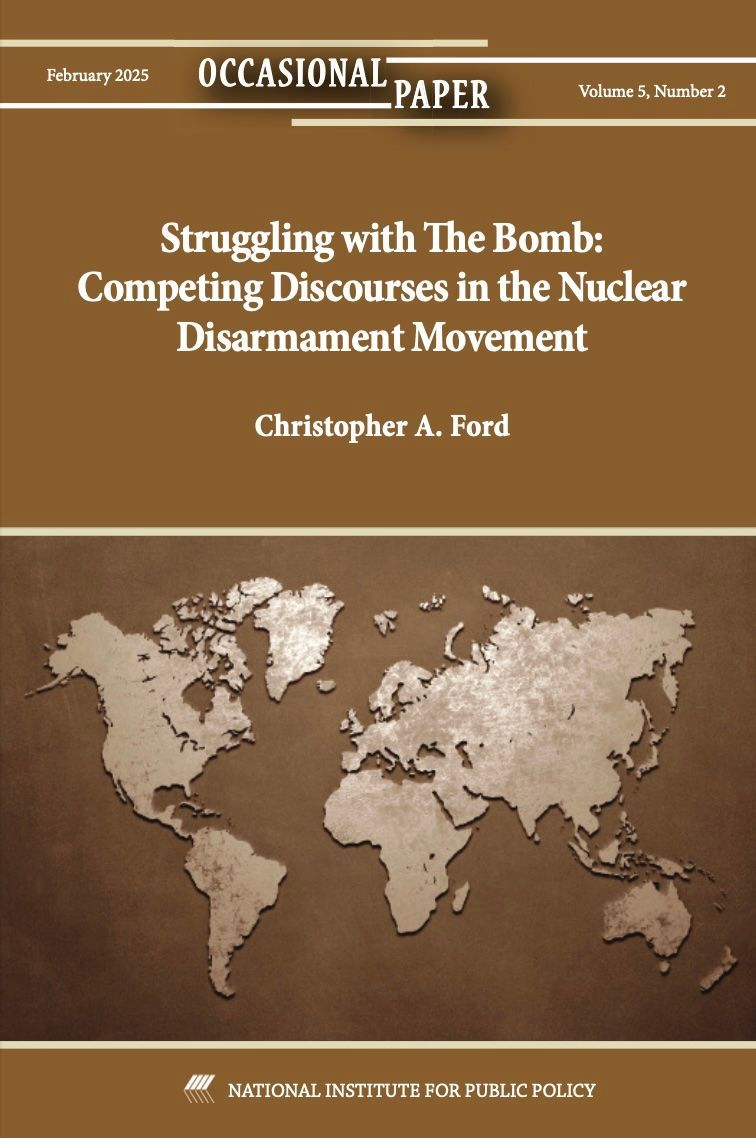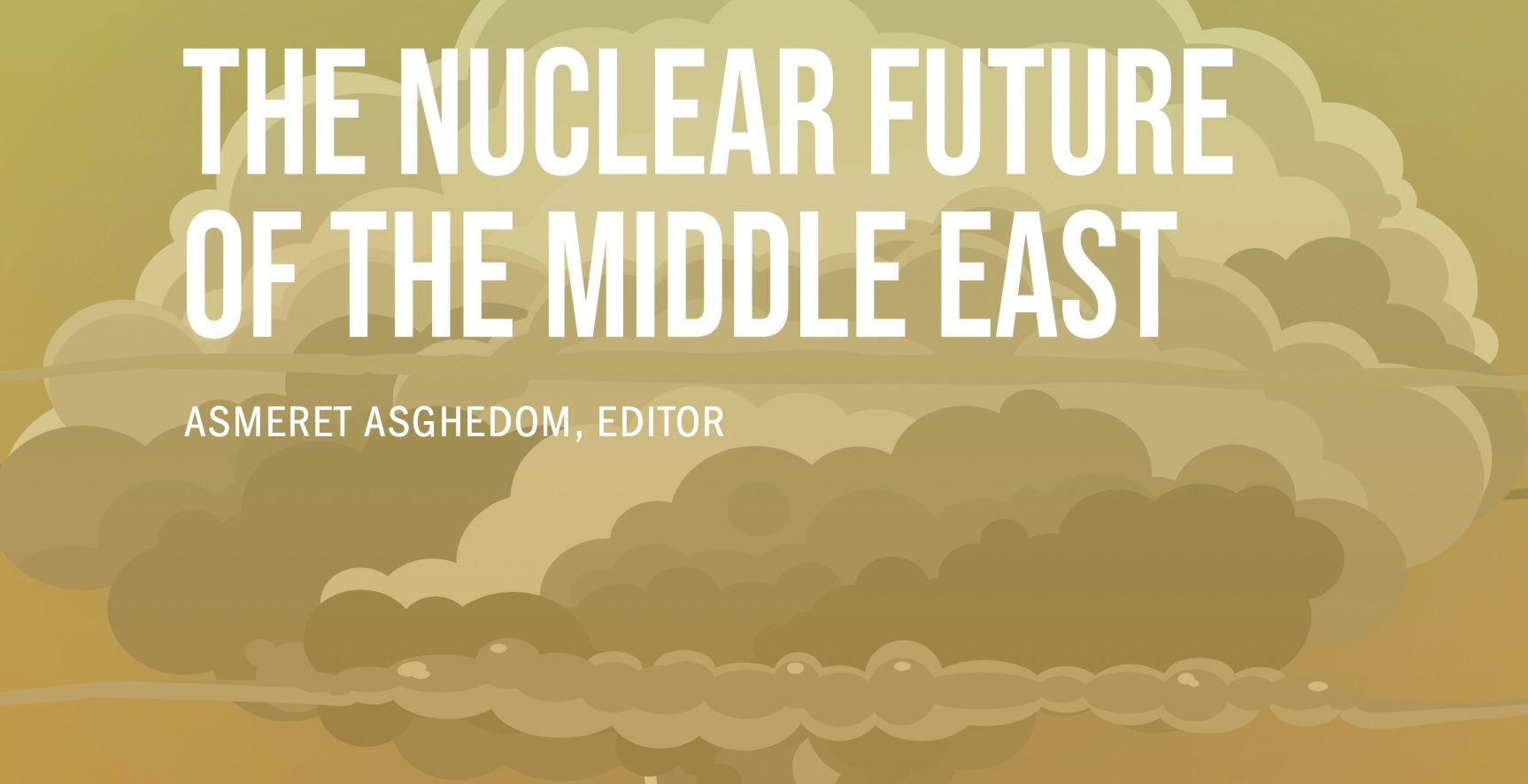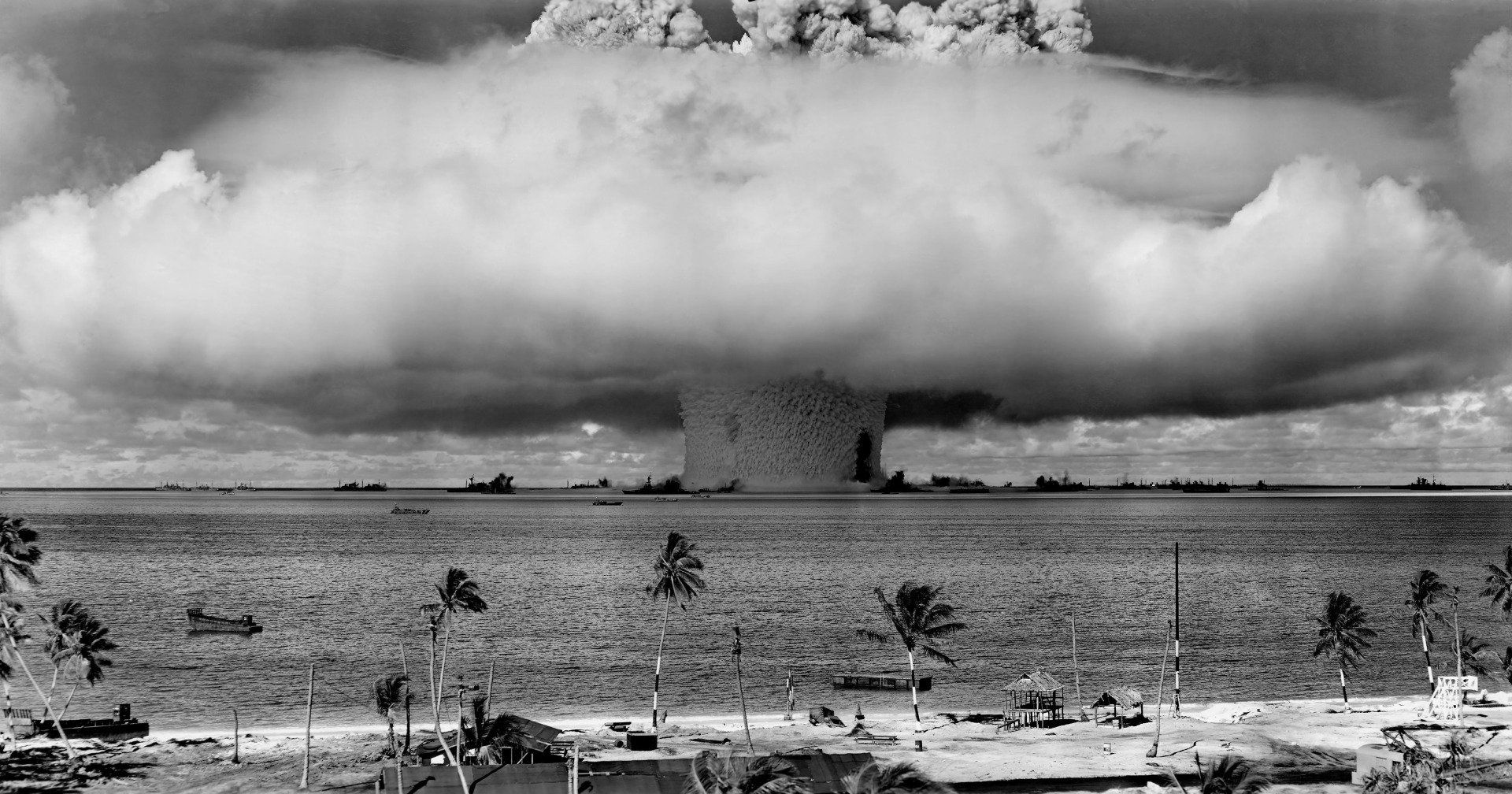The Hon. Christopher A. Ford
New Paradigms Forum -- International Security Policy Since 2009
Deterrence in National Strategy: Critique and Recommendations
Below are the remarks Dr. Ford delivered to a conference at Lawrence Livermore National Laboratory on December 11, 2024, organized by the Center for Global Security Research (CGSR).
Good afternoon, and thanks to Brad [Roberts] and the rest of the CGSR team for inviting me. It’s also a pleasure to see Pranay [Vaddi] again after some years, even if only virtually.
I’m also delighted to see no fewer than three of my former Missouri State University graduate students here among the attendees. I’m delighted you’re here, Garrett, Alan, and James, and pleased to see that our scrappy little defense-and-deterrence-focused program is supporting this community!
For this panel, we have been asked to talk a bit about three things: (1) whether – and, if so, how – U.S. National Security Strategy (NSS) documents should address deterrence; (2) what we think of how the Biden Administration tried to address deterrence issues in its national strategy; and (3) what the incoming administration of President-elect Trump should do. With the caveat, of course, that everything I’ll say today are just my own personal views and don’t represent the views of anyone else, I’m happy to give it a try.
Let me start by noting that I do believe there’s value in having the NSS address deterrence. To be sure, deterrence should be treated less as a per se objective and goal of national strategy than as a means for the accomplishment of grander things. Our national leaders ought to be able to articulate higher and nobler goals for America in the world than simply there not being a nuclear war or any kind of aggression against us or our allies.
But it is indeed a good idea to discuss deterrence in the NSS, for that document provides the highest-level sort of “commander’s intent” guidance to the U.S. bureaucracy, as well as serving as a critical explanatory document for Congress, the public, allies, and adversaries alike. If we have useful and compelling things to say about deterrence – and I dearly hope we do, for it is tremendously important – our thinking needs to be clear at every leve, starting with the NSS, for much will be depend upon, and draw its own strength from, the clarity of the guidance given in that document.
This is especially true, moreover, for the next NSS. For all the various threat-driven reasons we’ve been discussing in this conference, President Trump’s 2025 National Security Strategy will presumably need to say much more forward-leaning – and, as it were, upward-pointing – things about the nuclear and non-nuclear capabilities we need to ensure deterrence than any NSS has had to spell out for some decades. Re-introducing such ideas and approaches to U.S. national security discourse needs to be done compellingly and authoritatively, and that surely means this needs to start with the NSS.
But it’s also important to treat deterrence well, and clearly, in the NSS. And here’s where I must confess that I have a bone or two to pick with the Biden Administration’s 2022 National Security Strategy.
What Are We Deterring?
For purposes of our discussion today, I went back to look a little at how past NSS documents have addressed deterrence. In this regard, I was struck, in particular, by the contrast between the Biden Administration’s approach and that articulated in Ronald Reagan’s National Security Strategy of January 1987 – which I believe was the first public NSS document published under the statutory requirement established by the Goldwater-Nichols Act of 1986 that such things be produced.
So what was that articulation of “deterrence” focused upon deterring?
Well, in Reagan’s 1987 NSS, deterrence is quite specifically focused upon deterring actual military attack by the Soviet Union or its clients or proxies upon the United States, our allies, or our interests. The first priority policy objective supporting U.S. national security strategy, for instance, is described as deterring “any aggression that could threaten [U.S.] security” [p.4].
For the Reagan Administration, the idea was to “deter and contain Soviet military expansion” in Europe and the Asia-Pacific [p.3], whether that aggression was “direct or indirect” [p.16]. Indeed, “deterrence” in some variation of the word is explicitly mentioned more than 100 times in that 1987 document’s 41 pages, almost always in the context of Soviet threats. (The sole exception seems to be a single comment on page 17 about the need also to “deter” state sponsorship of terrorism.)
This makes Reagan’s NSS an interesting comparison to the Biden Administration’s National Security Strategy of October 2022. There, phrasing about the need to “deter” something appears 42 times in 48 pages – that is, less than half as frequently, for whatever that may or may not be worth – but the Biden Administration uses the term in connection with a considerably broader range of threats or problems.
In the Biden Administration’s NSS, beyond simply deterring aggression in the traditional sense of preventing actual military attack, the document also declares that we must “deter” unspecified “threats to regional stability,” “destabilizing activities” by Iran, cyberattacks by both state and non-state actors, hostage taking and the seizure of wrongful detainees, “disruptions to our democratic processes,” and even “domestic terrorist activity and any transnational linkages.” In fact, the Biden Administration says it aims to “deter … aggression and coercion in all its forms” [pp.16, 31-35, 38, & 42]. Wow.
Now, don’t get me wrong: I want to reduce the prevalence of such bad things too. But this all feels a bit promiscuous to me. Such laundry-listing is problematic in a high-level national security guidance document, one of the key purposes of which is presumably to help departments and agencies prioritize their efforts and resourcing against the national security challenges that each president determines are most critical. After all, as the saying goes, if everything is special, then nothing is really special.
Here, as so often elsewhere, the Biden Administration seems too eager to engage in cumulative political box-checking where it should be a bit more focused in giving guidance on prioritization. After all, we are no longer in the “unipolar moment” of unquestioned U.S. global dominance that we enjoyed back when Joe Biden and Donald Trump were about my current age. Our answer to every nice-sounding potential policy initiative cannot always be “yes” anymore.
As I have pointed out elsewhere, the Biden Administration’s 2022 National Security Strategy is also remarkably willing to describe wide swathes of what are surely its domestic political agenda as “national security” priorities. I won’t bore you with the full list, but it’s quite a remarkable collection. Among other things, it includes everything from liberalizing U.S. immigration policy to making investments in clean energy, and from overcoming “inequities in [health] care quality and access” and enacting gun control to “[p]rioritizing diversity, equity, inclusion, and accessibility to ensure [that] national security institutions reflect the American public they represent” and being “responsive to the voices and focus on the needs of the most marginalized, including the LGBTQI+ community.” (I’ve left out a number of additional items but if you want to see the collection in all its woke glory yourself, I’d refer you to pages 15-16, 20-21, 27-28, 31, 34, 40, and 46 of the 2022 NSS. That page listing alone probably tells you what you need to know.)
All these Biden policy ideas are for some reason advanced as “national security” priorities. With such an extraordinary list, I suppose it’s hardly surprising that Biden Administration deterrence policy aims at nothing less than deterring “aggression and coercion in all its forms.”
Nevetheless, I can’t help feeling that it is both intellectually lazy and substantively irresponsible to try to use “national security” discourse as a vehicle for advancing domestic policy equities, and to imagine that one could use “deterrence” to address all bad acts by all bad actors everywhere, all the time. Such intellectual indiscipline does national security a disservice, both by diluting focus and undermining prioritization in an era of dramatically worsening geopolitical threats, and by swamping national security planning with a veritable stadium’s worth of political footballs.
On balance, such domestic political box-checking in national security and foreign affairs policy is surely a mistake. We may no longer, alas, be in an era in which someone like Senator Arthur Vandenberg could proclaim the need to “stop partisan politics at the water’s edge,” but surely our leaders can do more to avoid making a consistent and resolute bipartisan approach to national security threats harder.
Are We Really Talking about “Deterrence” at All?
But the NSS also felt a bit intellectually sloppy to me, too, for in its discussion of “deterrence” in national security guidance documents, it’s also not always clear that the Biden Administration was really talking about what should properly be termed “deterrence” at all.
After all, traditionally, deterrence arguably seeks to maintain the status quo, keeping a would-be aggressor state from becoming an actual aggressor by making clear to its leaders that the resulting pain and cost it would face as a result of such an attack would outweigh any potential gain. But this is also generally predicated on the idea that the wrong in question isn’t already happening.
Many of the things that the Biden Administration’s National Security Strategy says it seeks to “deter,” however – e.g., malicious cyber activity, hostage taking, disruptions to our democratic process, and destabilizing Iranian activities, not to mention “aggression and coercion in all its forms” – are already occurring. Indeed, many of them are happening at scale, and have been for a long time.
I don’t want to be too pedantic, but getting someone to stop something they’re already doing isn’t clearly “deterrence” at all; it seems rather more like what is sometimes called “compellance.” And, by the way, compellance is usually felt to be harder to achieve than deterrence – not least because, as Thomas Schelling once pointed out, forcing someone to stop doing something shifts the burden of action to the one seeking to compel. (Here, that means to us.)
As I noted earlier, the deterrence focus of Reagan’s 1987 National Security Strategy aimed simply to keep the Soviets and their allies inactive against us in terms of direct military attack. Yet once you get beyond the narrow category of direct attack – which the Biden Administration clearly does also seek to deter – the 2022 NSS requires us somehow to act in order to convince a huge array of troublemakers to stop doing a huge array of things that they’ve been doing for a long time.
It seems to me that only some of what is discussed as “deterrence” in the 2022 document is therefore actually deterrence at all. And this, in turn, surely hurts the ability of the NSS to provide the conceptual clarity we need for national security policy in a challenging era.
Moreover, the Biden Administration also sometimes seems to think about “deterring” bad acts in remarkably strange ways. As an example, take biological weapons (BW) threats. By way of comparison, the Reagan Administration’s 1987 NSS spoke explicitly about deterring Soviet use of chemical weapons (CW) by maintaining and modernizing the United States’ own chemical arsenal [p.27]. It envisioned, in other words, deterring Soviet CW use by threatening direct, in-kind retaliation. By contrast, when it comes to BW threats, the Biden Administration said that it aims to “deter state biological warfare capabilities” by “strengthen[ing] the Biological Weapons Convention” (BWC) [p.29]. To my eye this is not obviously a “deterrent” approach to BW threats at all. (And what is actually being claimed here anyway?)
For all the profligacy of its invocation of the word “deterrence” and the emphasis they place upon the idea of “integrated deterrence,” therefore, the Biden Administration’s national security guidance documents sometimes seem to find actual deterrent signaling distasteful. Remember, for instance, that in the 2022 Nuclear Posture Review (NPR), the Biden Administration chose todrop the Trump Administration’s declaration in the 2018 NPR that the United States does not necessarily rule out a potential nuclear response to a sufficiently “significant non-nuclear strategic attack.” Indeed, they abandoned even the Obama Administration’s own analogous comment in its 2010 Nuclear Posture Review about an attack with biological weapons (BW) – a deterrent caveat adopted when Joe Biden was himself Vice President.
Accordingly, at a time when U.S. officials formally assess that Russia and North Korea all have active offensive BW programs – and that China never “eliminate[d] its assessed historical biological warfare program” while Iran continues to wish to work on “biological agents and toxins for offensive purposes” – the 2022 NPR urges us simply to look to the hapless BWC, of all things, for “deterrence.” The Biden Administration apparently likes saying the word “deterrence,” but the thinking behind such verbiage sometimes seems quite unserious.
Improving for the Next Strategy
My recommendations for how the incoming administration should treat deterrence in its National Security Strategy therefore start with avoiding the mistakes of the Biden one.
Don’t, for example, speak sloppily about “deterring” pretty much everything bad. Instead, focus clearly and emphatically on the key challenge of deterring predatory state aggression. And don’t play the shallow and distracting game of box-checking domestic political agenda items in your national security strategy.
But do provide crisp and clear guidance to the national security bureaucracy about what threats it is most critical for us to meet and what opportunities it is most important for us to seize. And, in that respect, do provide as compelling account as you can of what we need to deter, how we plan to deter it, and why this approach represents a genuine and thoughtful tailoring of U.S. policies and capabilities to the specific adversaries whose behavior it is our objective thereby to shape.
Finally, do articulate grander and more noble goals for our country in the world – goals befitting our highest values and most worthy sense of ourselves: inspiring ones for which the achievement and maintenance of deterrence is instrumental and necessary, but which reach well beyond simply the objective “not having a war.”
With the next National Security Strategy, President-elect Trump will have the chance to bring the emerging new U.S. consensus on nuclear weapons policy into the highest levels of U.S. policymaking. He will have the chance to set a tone and direction that will guide government policy – and help shape the policies of our many allies and partners – for many years to come as we reorient ourselves for an era of grim and resolute competition and contestation unlike anything our nation has seen since the early Cold War.
So I would urge the drafters of the next NSS to be clear, crisp, concise, and focused. We no longer have the luxury of using high-level national security guidance documents as vehicles through which to massage key domestic political constituencies in areas only tangentially related – if indeed related at all – to national security. It is time, finally, for strategic seriousness.
— Christopher Ford



Copyright Dr. Christopher Ford All Rights Reserved





